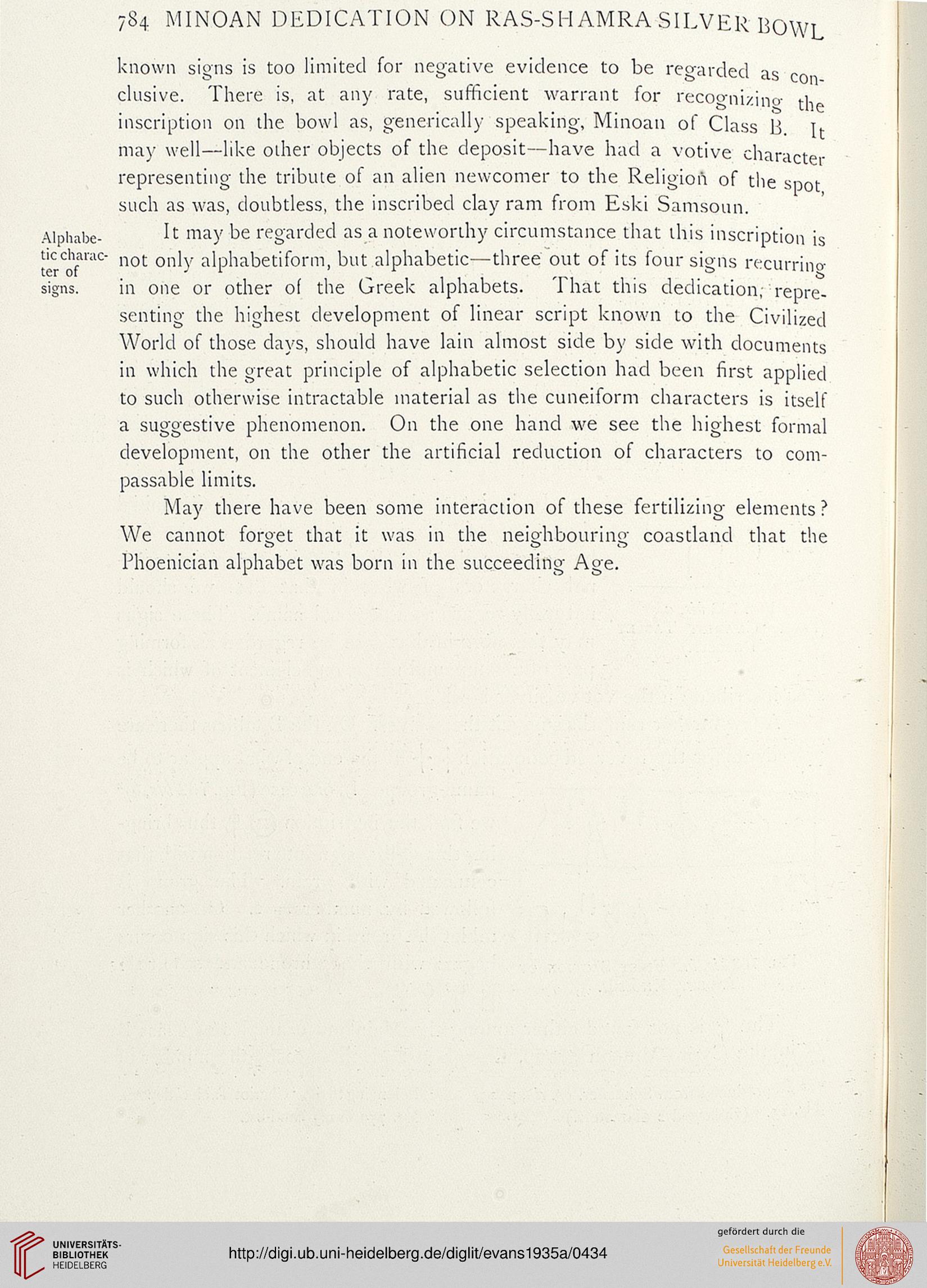784 MIN.OAN DEDICATION ON RAS-SHAMRASILVER BOWL
known signs is too limited for negative evidence to be regarded nc -
o cd &"i ^tv,^i (L.s con-
clusive. There is, at any rate, sufficient warrant for fecooiuzino- tl
inscription on the bowl as, generically speaking, Minoati of Class B It
may well—like other objects of the deposit—have had a votive charade-
representing the tribute of an alien newcomer to the Religion of the spot
such as was, doubtless, the inscribed clay ram from Eski Samsoun.
Alpliabe- I' may De regarded as a noteworthy circumstance that this inscription is
ticcharac- not orily alphabetiform, but alphabetic—three out of its four signs recurrino-
signs. in one or other of the Greek alphabets. That this dedication; repre-
senting the highest development of linear script known to the Civilized
World of those days, should have lain almost side by side with documents
in which the great principle of alphabetic selection had been first applied
to such otherwise intractable material as the cuneiform characters is itself
a suggestive phenomenon. On the one hand we see the highest formal
development, on the other the artificial reduction of characters to corn-
passable limits.
May there have been some interaction of these fertilizing elements ?
We cannot forget that it was in the neighbouring coastland that the
Phoenician alphabet was born in the succeeding Age.
known signs is too limited for negative evidence to be regarded nc -
o cd &"i ^tv,^i (L.s con-
clusive. There is, at any rate, sufficient warrant for fecooiuzino- tl
inscription on the bowl as, generically speaking, Minoati of Class B It
may well—like other objects of the deposit—have had a votive charade-
representing the tribute of an alien newcomer to the Religion of the spot
such as was, doubtless, the inscribed clay ram from Eski Samsoun.
Alpliabe- I' may De regarded as a noteworthy circumstance that this inscription is
ticcharac- not orily alphabetiform, but alphabetic—three out of its four signs recurrino-
signs. in one or other of the Greek alphabets. That this dedication; repre-
senting the highest development of linear script known to the Civilized
World of those days, should have lain almost side by side with documents
in which the great principle of alphabetic selection had been first applied
to such otherwise intractable material as the cuneiform characters is itself
a suggestive phenomenon. On the one hand we see the highest formal
development, on the other the artificial reduction of characters to corn-
passable limits.
May there have been some interaction of these fertilizing elements ?
We cannot forget that it was in the neighbouring coastland that the
Phoenician alphabet was born in the succeeding Age.




